Academics:
Forever Excelling
Students aren’t the only ones with big dreams. Our world-class faculty are the bedrock of Syracuse University, sharing their knowledge with every student who enters their classrooms. These scholars engage in cutting-edge, interdisciplinary research that extends beyond our campus community and addresses some of the most pressing global issues. Faculty also create new ways for students to learn in the classroom, in the virtual world, in labs and maker spaces, and in field sites and cities everywhere.
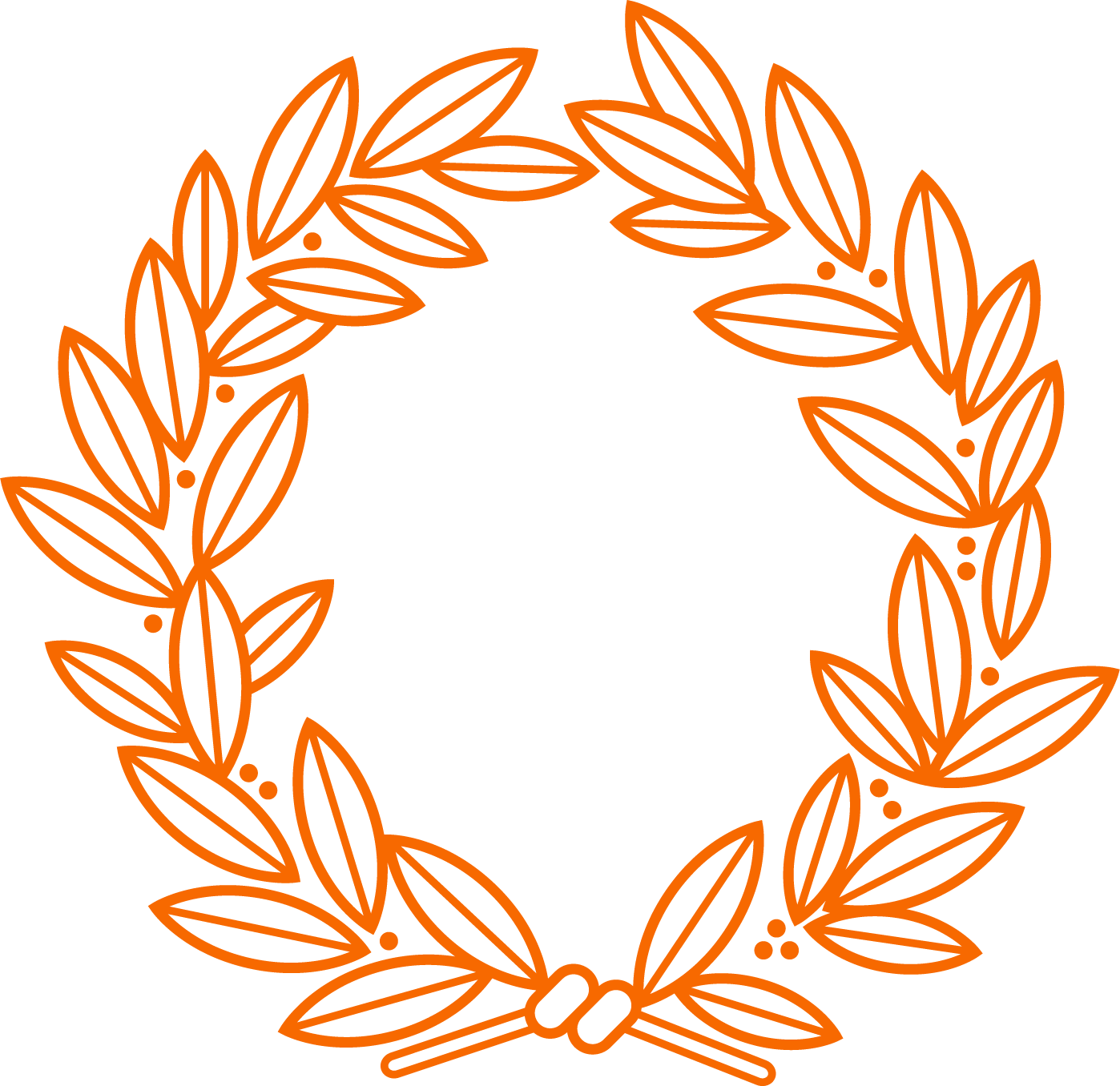
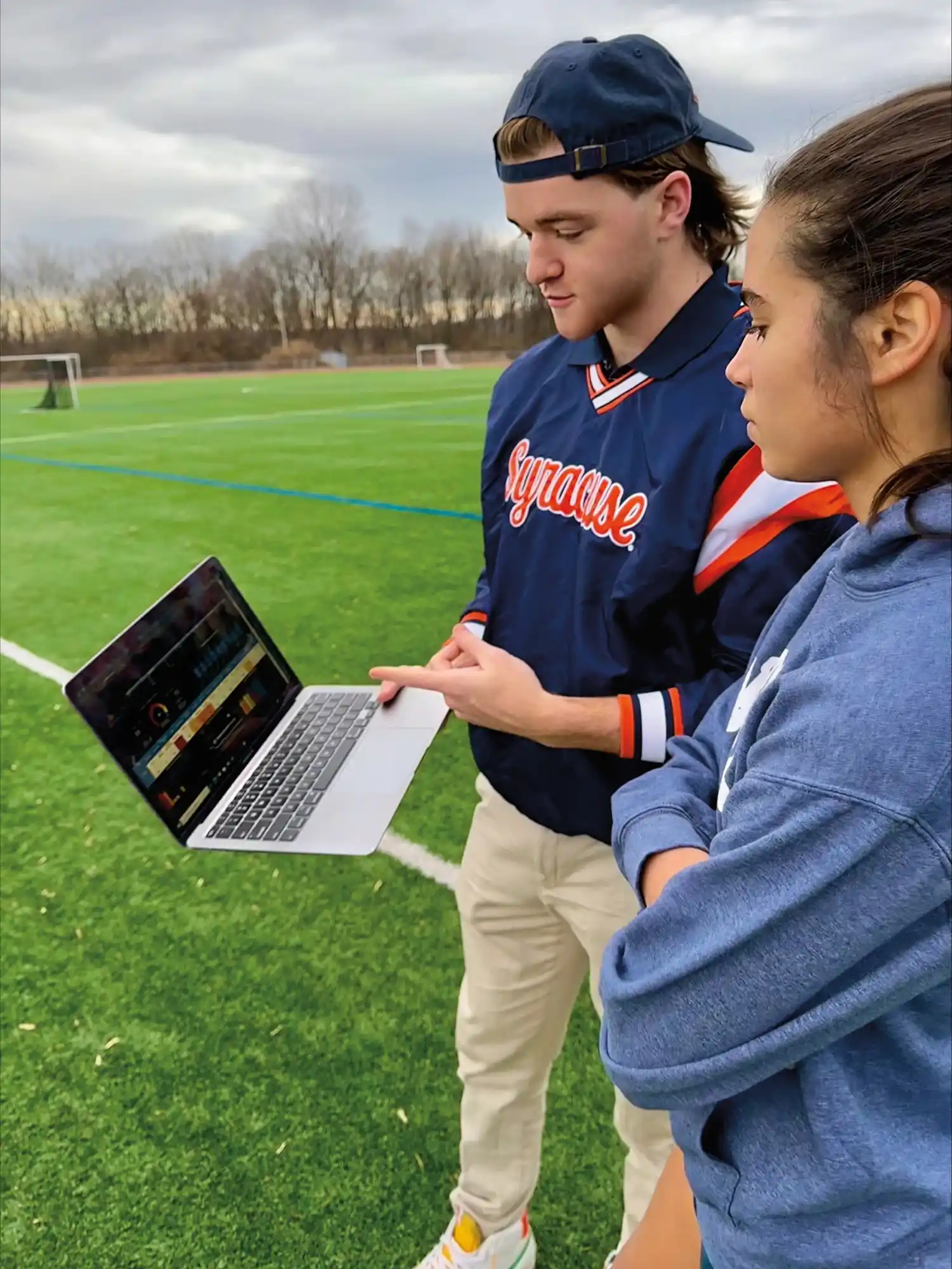
A Historic Sport
Analytics Partnership
The sport analytics program in Falk College and the Kumamoto Volters professional basketball team are partnering for the 2024-25 season, allowing Syracuse sport analytics students to utilize data analysis to impact the team’s performance. This partnership is the next phase for sport analytics students, like Dan Griffiths ’26 (pictured at left), who already provide data analysis for 11 of Syracuse’s athletic teams.
It’s the first partnership of this kind between an American university and a Japanese professional sports team. Sport analytics students and faculty will work in different capacities with students and faculty from Kumamoto University, located on the Japanese island of Kyushu.
Read about the Kumamoto Volters partnership$1.3B+
in direct support to
schools, colleges and units
117
faculty positions and
fellowships created
$216M+
in sponsored
research grants
$1.7M
in funding to support
undergraduate students engaging
in faculty-guided research and
creative inquiry
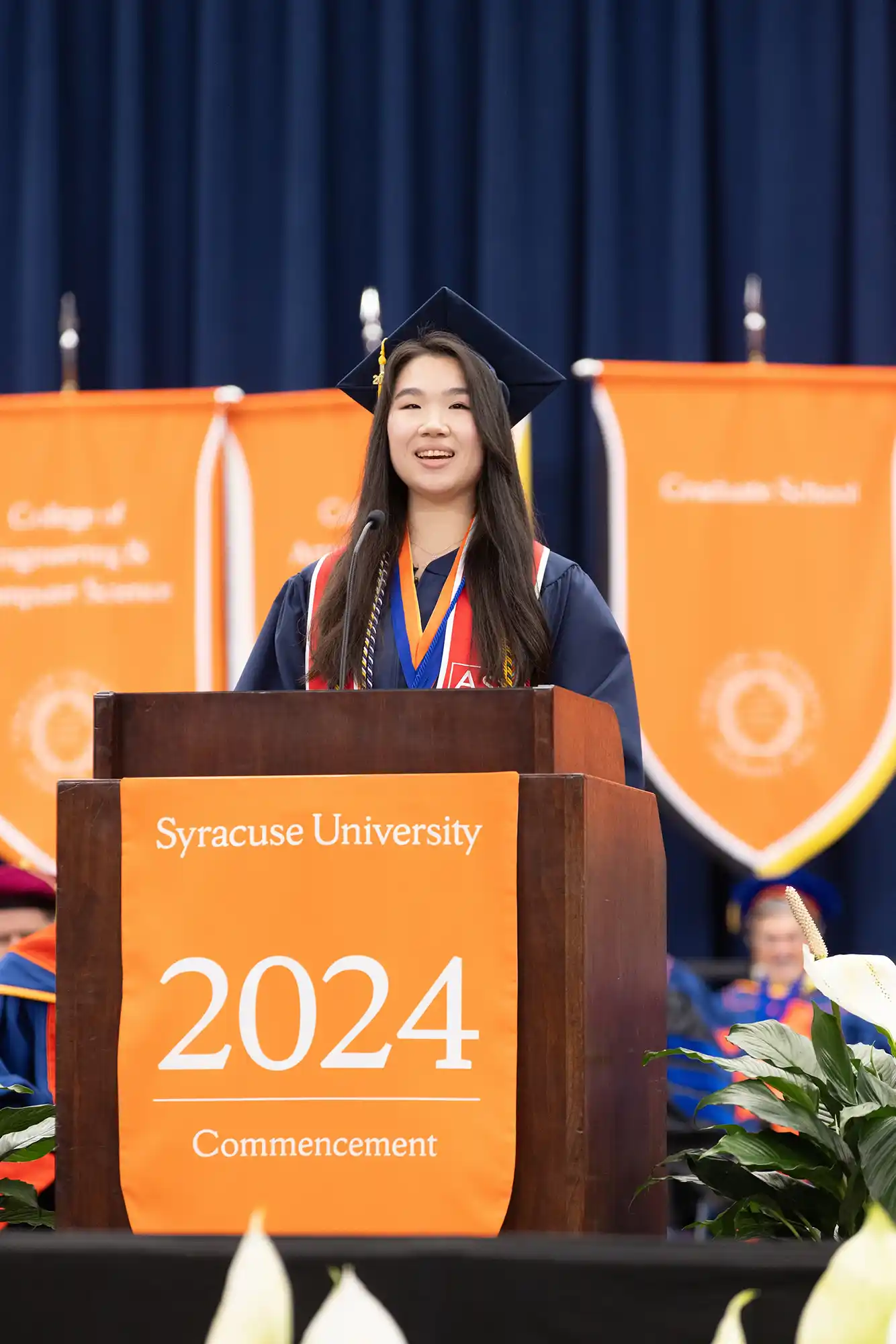
University Scholar Yvonne Chen-Yih Kuo ’24, an Honors student and psychology and forensic science major in the College of Arts and Sciences, speaks at Commencement 2024.
A Model Honors Program
While honors students have pursued their academics at Syracuse for many years, the enduring, transformational support of Renée Schine Crown ’50, H’84 and Lester Crown has shaped the Honors Program to a beacon of excellence. The Renée Crown University Honors Program extends material support to students in the program to pursue an extraordinary range of research and creative ventures relating to their undergraduate careers.
The Honors Program has more than 1,000 undergraduate students representing 128 majors. The program’s endowment provides scholarships and financial assistance for research endeavors, studying abroad, engaging in conferences and internships, and other professional development activities that would otherwise present a significant hardship for students. In the 2023-24 academic year alone, 171 students received financial support for their scholarly pursuits.

University Scholar Yvonne Chen-Yih Kuo ’24, an Honors student and psychology and forensic science major in the College of Arts and Sciences, speaks at Commencement 2024.
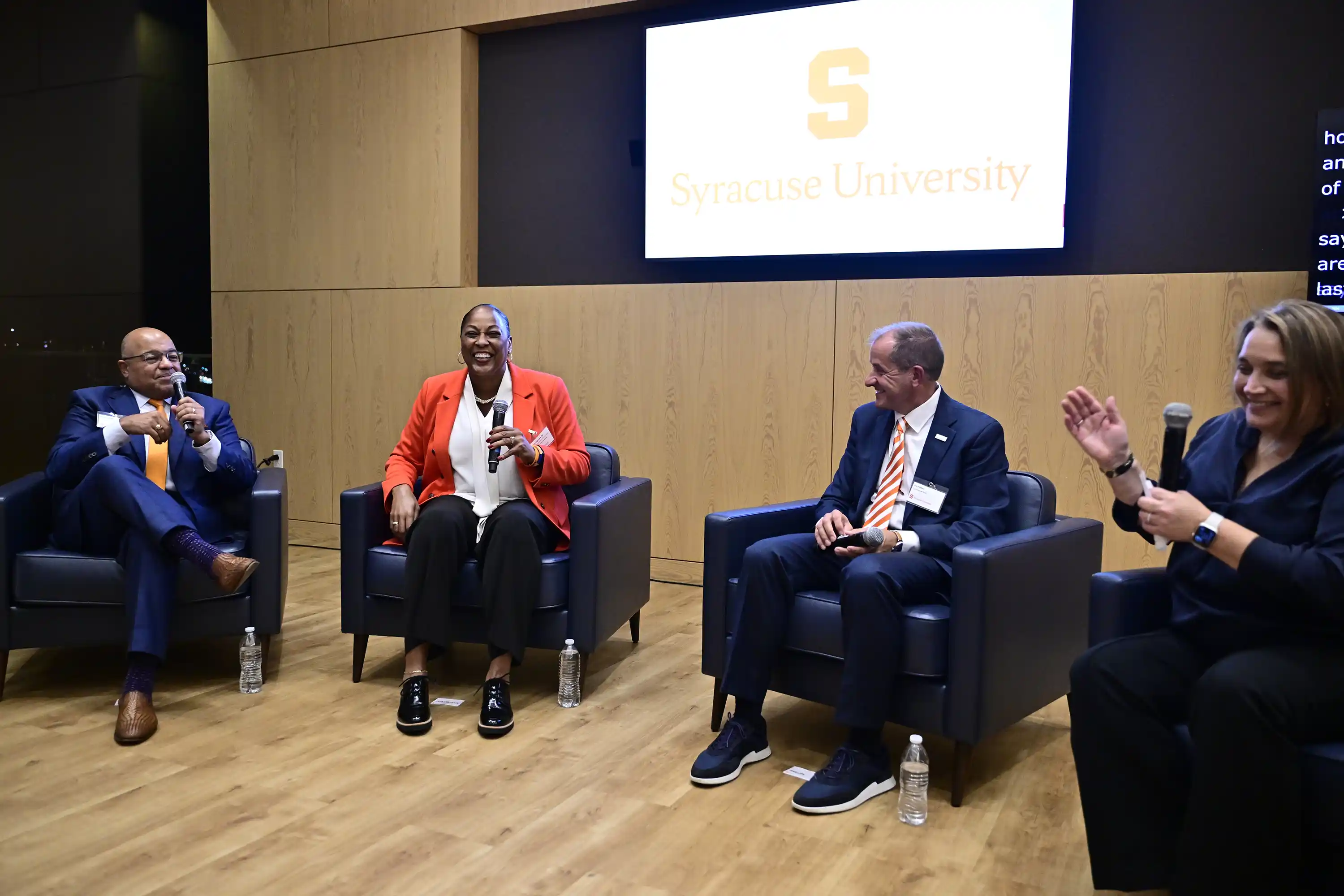
New Center in
Our Nation’s Capital
A panel discussion featuring Trustee and Sportscaster Mike Tirico ’88, Women’s Basketball Head Coach Felisha Legette-Jack ’89, ACC Commissioner Jim Phillips, and Margaret Talev, Kramer Director of Syracuse’s Institute for Democracy, Journalism and Citizenship, marks the opening of the University’s new Washington, D.C., location in September 2024. Housed within the D.C. campus, the IDJC is the newest of more than 40 research centers and institutes.
Peptide Drug Advances Could
Redefine Obesity, Diabetes Care
Over the past 18 months, Robert Doyle, a medicinal chemist and the Jack and Laura H. Milton Professor of Chemistry in the College of Arts and Sciences at Syracuse University, introduced two new peptide compound discoveries at conferences of the American Chemical Society and The Obesity Society. He and his collaborators reported that the compounds notably reduce body weight and normalize blood glucose levels without the typical negative side effects experienced by many patients who take currently available GLP-1-based antiobesity drugs.
Doyle and his fellow researchers have since worked on refining the compounds, GEP44 and KCEM1, and have undertaken lab-animal testing, filed patents, spoken with investors and explored market placement. They believe these drugs, ultimately intended for use in humans, will offer significant advances in how obesity and diabetes are treated in the U.S. and around the world. The researchers have also discovered another highly promising weight-loss compound and new outgrowths that have potential to treat opioid addiction through similar neuroendocrine pathways.
GEP44 consists of 44 amino acids that target receptors in the brain, pancreas, and liver simultaneously, uncoupling the connection between food intake and nausea and vomiting. “It’s sort of a reboot of the body’s computer. It’s the sum of those receptors communicating with each other that is facilitating changes to metabolic behavior like what you’d see in a lean person or someone post bariatric surgery,” Doyle says.
Read about Doyle’s research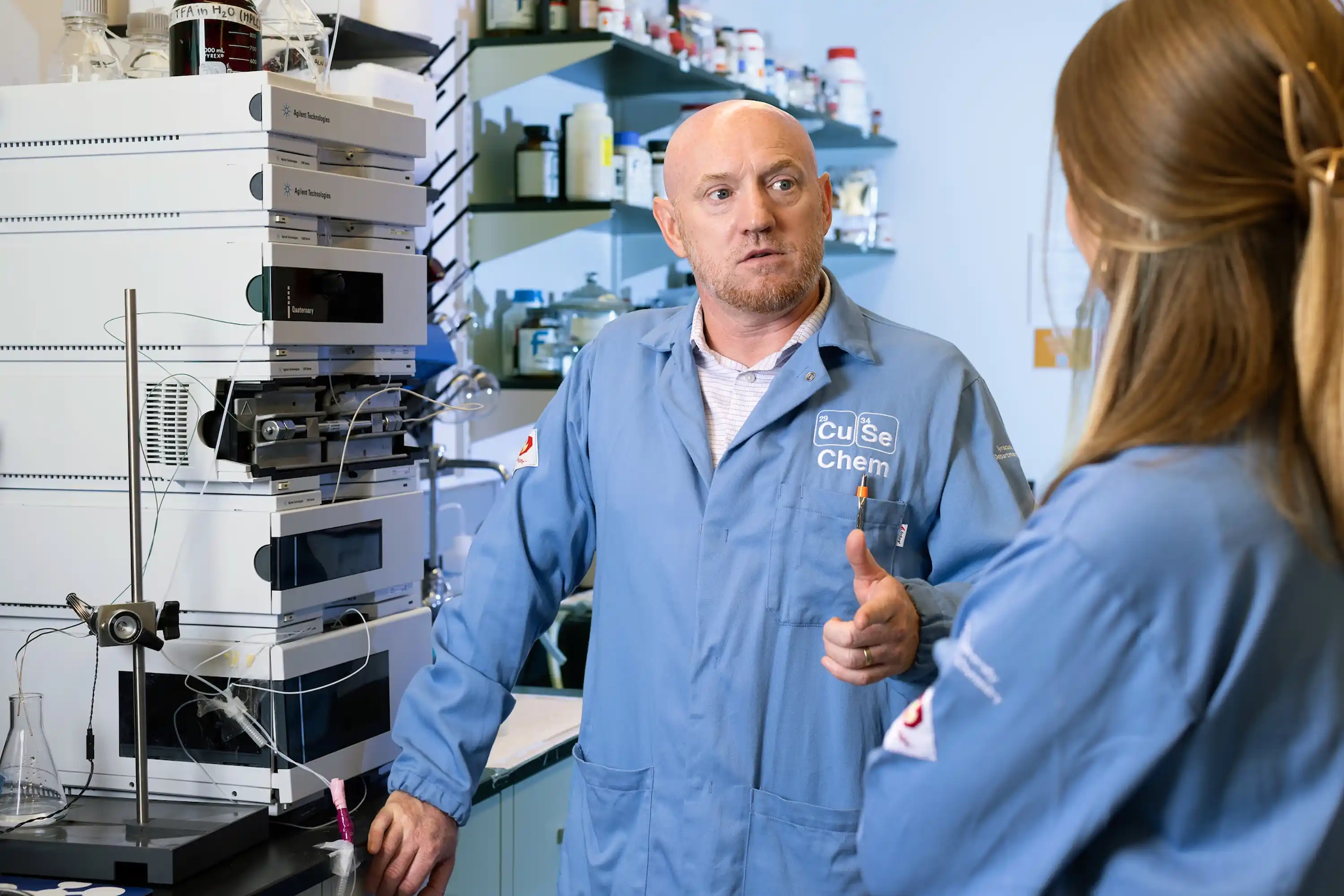
Medicinal chemist Robert Doyle confers with lab member Emily Ashlaw G’27, a Ph.D. candidate interested in peptide therapeutics. She’s part of a team of students working at the nexus of chemical and pharmaceutical science.
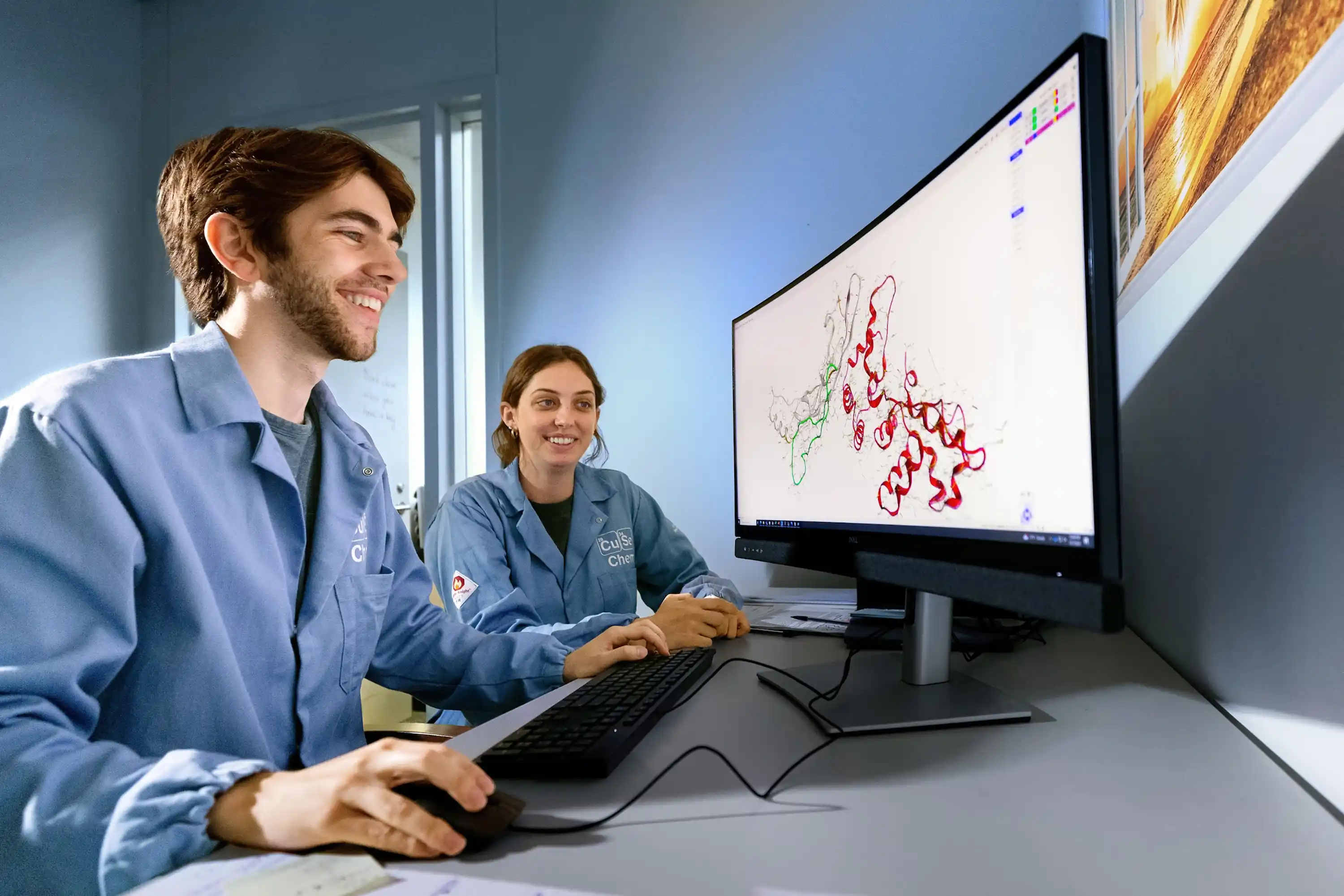
Nicholas Najjar ’21 and Lucy Olcott ’25—a Ph.D. and B.S. student, respectively—get hands-on, real-world experience in Doyle’s lab. “He’s a driven researcher who looks out for his students,” Olcott says.
3D Bioprinting at the
Frontier of Medical Innovation
More than 106,000 Americans are waiting for a lifesaving organ transplant, with a new name added to the list every nine minutes. The demand is critical, explains Syracuse University professor Pranav Soman. “There are as many people dying from organ disease as those needing a transplant. It’s a huge public health issue.”
Soman hopes that his work in the College of Engineering and Computer Science will save lives. The award-winning researcher is renowned for his contributions to 3D bioprinting—a new field in which organic and biological materials combine to create artificial structures that imitate human cells and tissues. His goal is to print a fully biocompatible 3D organ.
Soman works with Chris Santangelo, a renowned theoretical physicist in the College of Arts and Sciences. Santangelo has expertise in tiny nonbiological objects, including self-folding materials, mechanical metamaterials and liquid crystals. His work has been used to create biomaterials that help with hemorrhage control and collapsible origami structures that keep arteries open.
Santangelo and Soman oversee the Smart Materials interdisciplinary research group in the BioInspired Institute. Working with scientists from different fields and institutions, they aim to replace or repair body parts damaged by age, disease or trauma. “Smart, multifunctional materials depend on rich collaboration. The more interdisciplinary we are, the better we can tackle today’s challenges,” Soman says.
Read about 3D bioprintingLearning How Plants and Stories
Heal in Sarajevo
During spring 2024 a group of architecture students traveled to Sarajevo, the capital of Bosnia and Herzegovina, to gain insight on how communities heal in the aftermath of war. Students met local artists, architects and educators—many associated with a research center specializing in visual arts from post-conflict societies—explored the city and surrounding countryside and learned about traditional uses for local plants. Their onsite research will inform designs of public seed libraries and storytelling spaces, which are intended to promote communal gathering and healing.
For Haotian Alex Xue ’26, the trip underscored the value of experiencing a place in person. “Our travels, the places we visited, and our interactions with locals of all ages and backgrounds helped us gain a multifaceted perspective on Sarajevo that wouldn’t have been possible if we weren’t here,” he says.
Terry Xu ’26 was struck by how the physical scars of war, visible throughout the city, seemingly carried different significance across generations and individuals. This realization, he says, will inspire his design. “This realization, he says, will inspire his design. “Seeing how people can have so many different emotions, opinions and attitudes has inspired me to think through how I can create space that’s open to everyone—not only people who come here to heal their traumatic past, but also those wanting to enjoy their present and future.”
Read more about the Sarajevo trip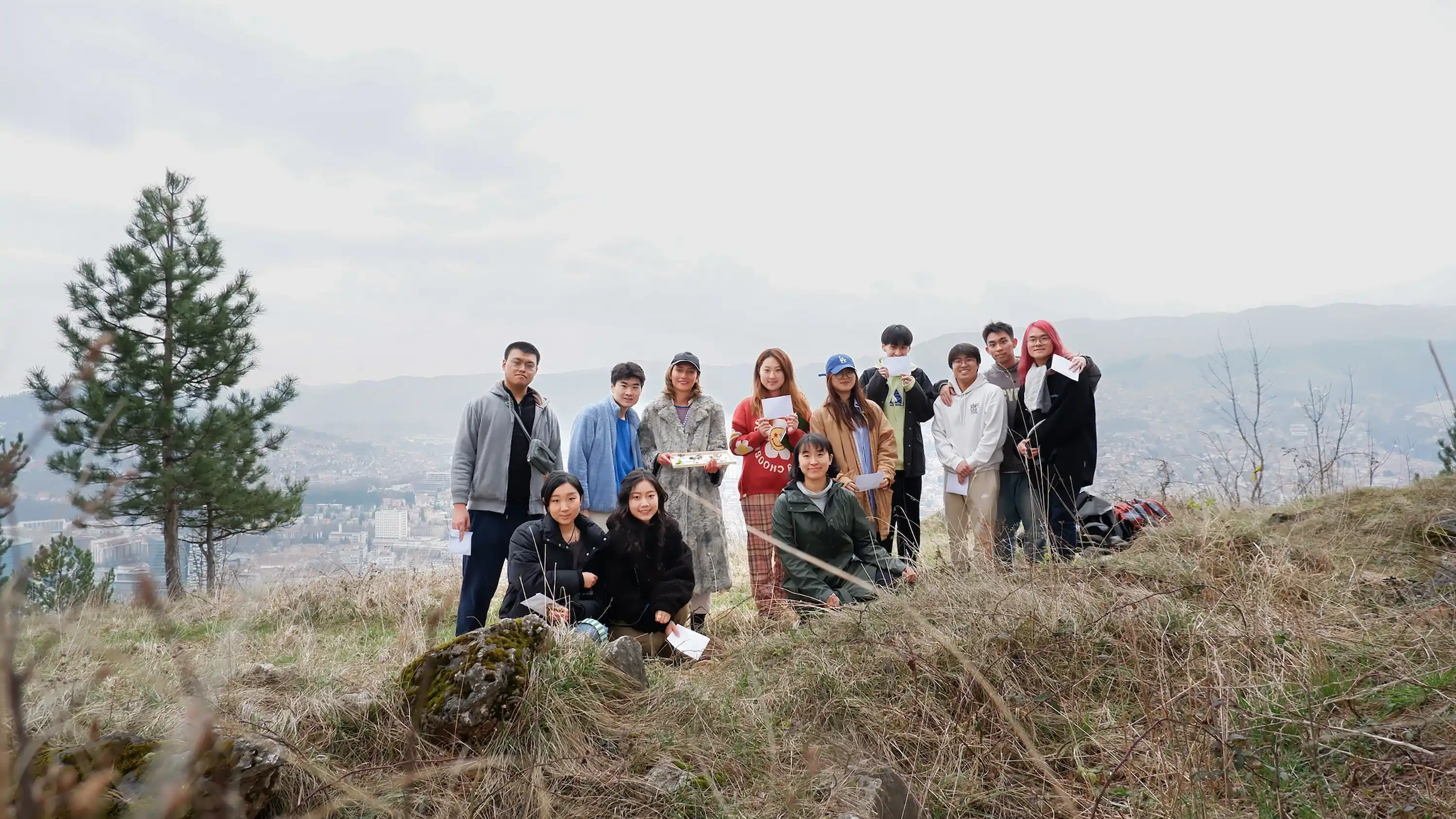
School of Architecture students learned about Sarajevo’s history, and traditional uses for regional plants, through a series of workshops developed with artist Smirna Kulenović (back row, third from left).
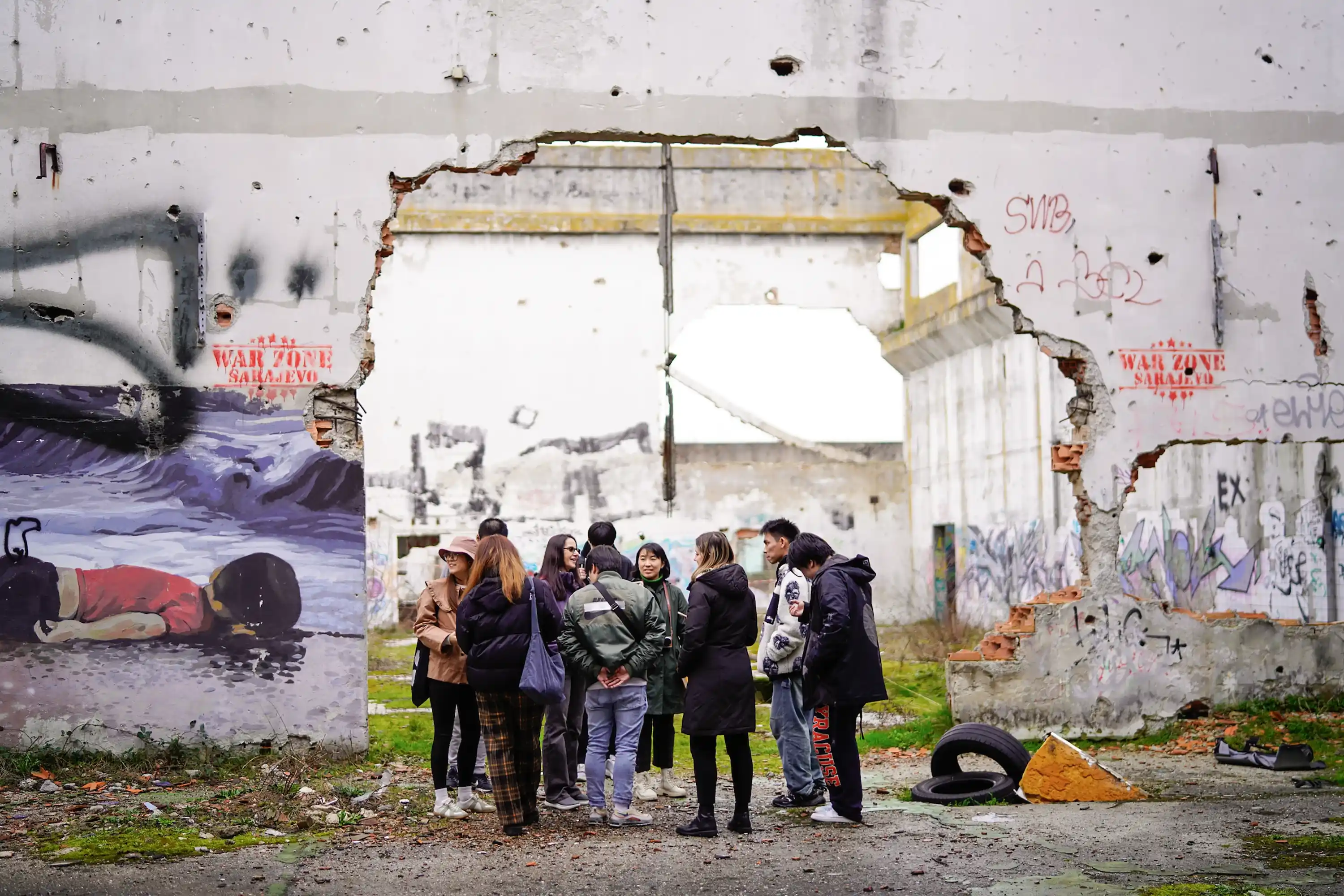
Terry Xu ’26 says one valuable insight he gained from on-site learning was that the physical evidence of war on Sarajevo’s infrastructure bore different significances among different residents.
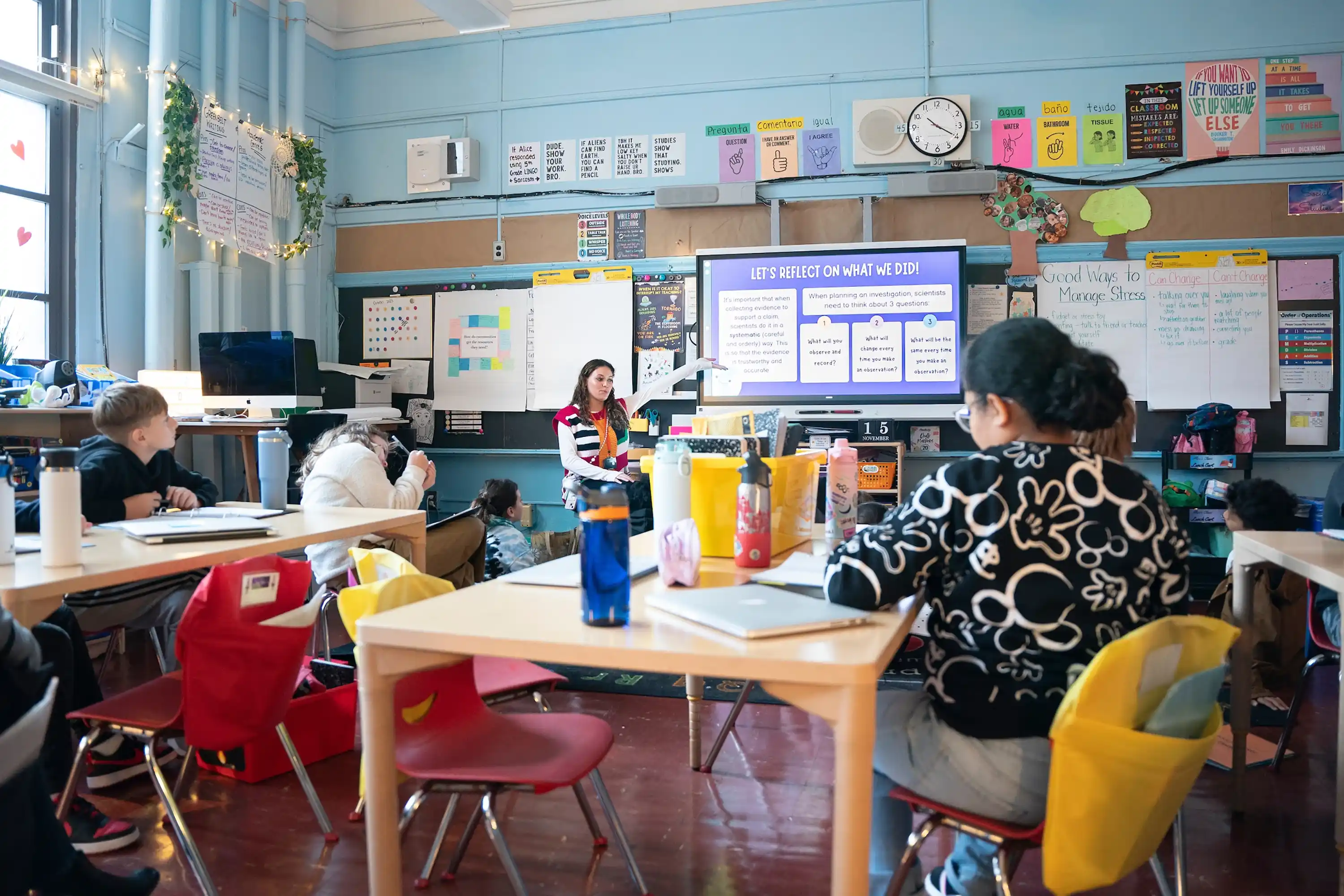
The supported teacher training placements ensure that graduates of School of Education’s inclusive education programs are ready to work confidently with the full range of learners and help all children succeed.
Putting Inclusive Education into Practice
During her teacher training semester in NYC, Elena Perez ’24 learned from Syracuse’s School of Education alumni who are now teachers and administrators at NYC schools that exemplify models of inclusive education.
The School of Education’s Bridge to the City program provides a guided student teaching experience and the chance to see ideals of inclusive education applied in diverse classrooms. Students hone their teaching skills and broaden their perspectives on cultures, families and professional practices under the mentorship of seasoned teachers who are, in many cases, alumni of the program.
“My favorite part of the Bridge to the City program has been the opportunity to learn from experienced teachers and truly inclusive schools. I have been placed in Community Roots Charter School and in PS 212 Midtown West, which both are so different from any other school I’ve been in before. I find myself learning so much every day and wanting to take note of so many things for when I have a classroom in the future,” says Elena Perez ’24, who majored in inclusive elementary and special education (grades 1-6).
Read about Perez’s experiencePromoting
Information Literacy
Why does your local library have the books it does or offer certain community programming? Such topics are part of what Olivia Russo G’24 learned in her master’s classes in library and information science at the School of Information Studies.
“It blows my mind the capacity for good we have as librarians through community services and programs,” says Russo. She received the Information Literacy Scholars scholarship, which, in addition to covering half her tuition, provided her with part-time employment at the Syracuse University Libraries.
As a scholar, she received practical experience in a variety of capacities—from desk support in the Learning Commons to information literacy instruction and assessment. “You cannot put a dollar amount on the hands-on learning experience that I get working at the reference desk and teaching in an undergraduate classroom,” Russo says.
Russo understands the importance of giving back to the University and how helpful it can be. “There are a lot of students who are at this University due to donors and scholarships, and we’re all so grateful. It’s so important to give, especially from the library’s perspective where we’re all about sharing and creating knowledge. That goes to donating to the library too. If it weren’t for ample funding for the libraries, students wouldn’t have access to so many databases and pieces of information that’s crucial to our learning.”
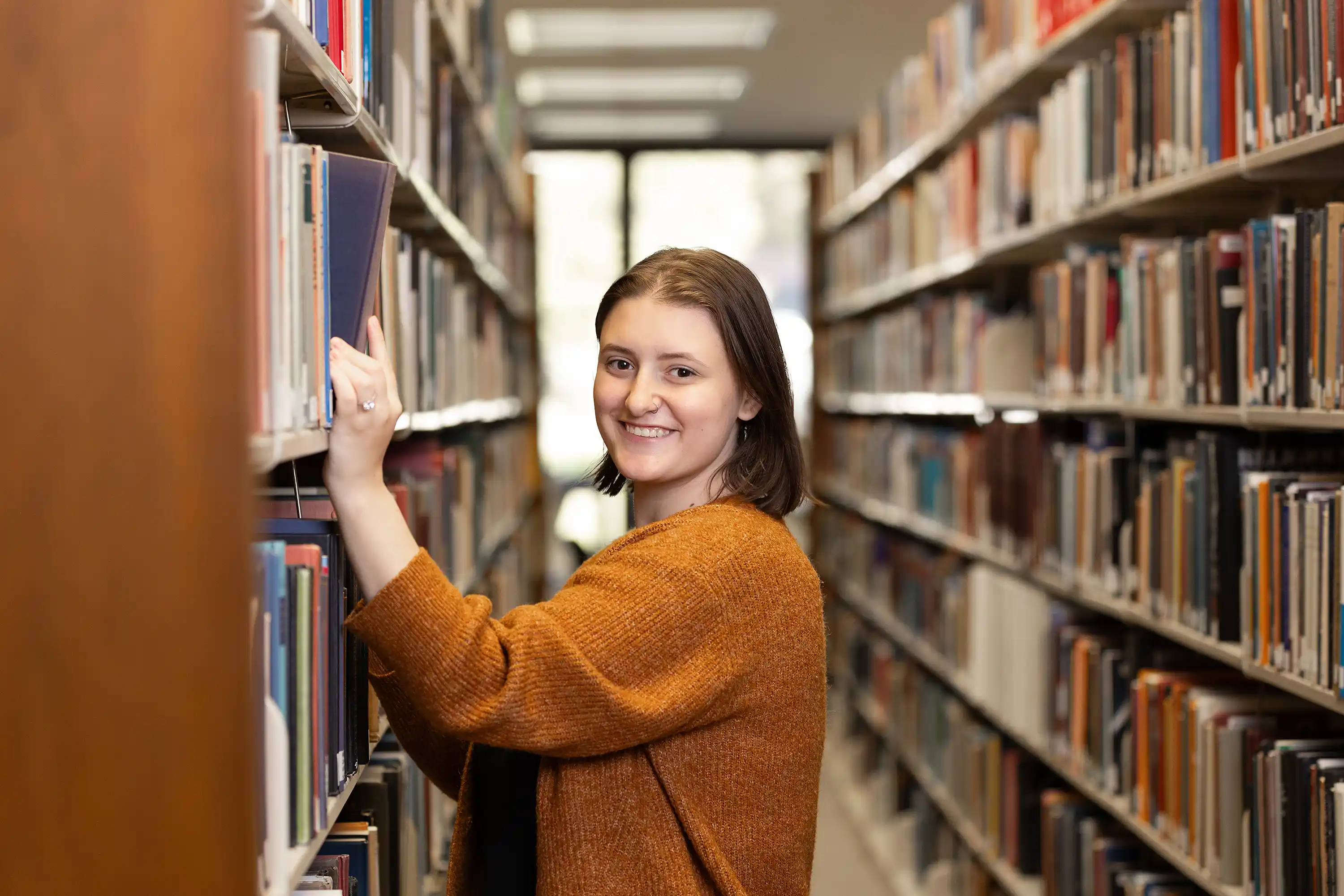
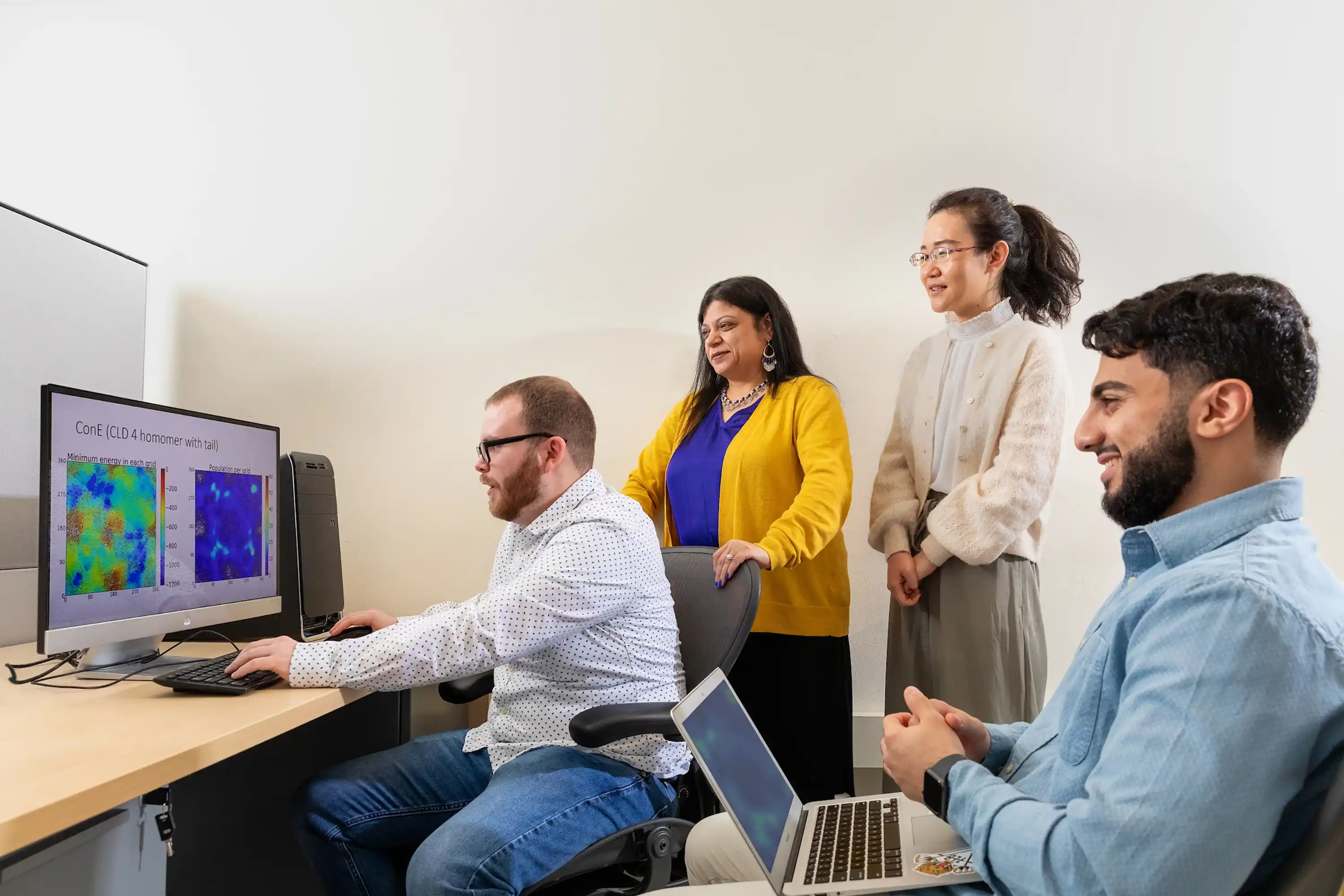
Associate professor Shikha Nangia (second from left) is exploring ways to advance medicinal treatments for Parkinson’s, Alzheimer’s and other neurodegenerative diseases.
Associate professor Shikha Nangia (second from left) is exploring ways to advance medicinal treatments for Parkinson’s, Alzheimer’s and other neurodegenerative diseases.
Lab Focuses on Curing Brain-Related Diseases
For nearly a decade, Shikha Nangia, associate professor of biomedical and chemical engineering in the College of Engineering and Computer Science, has been unraveling a mystery of the molecular world. At issue is how to successfully permeate the bloodbrain barrier, a nearly impenetrable border of cells that protects the brain. The barrier is vital for its role in preventing toxins and pathogens in the bloodstream from infecting the brain, but it also blocks drugs that could potentially target tumors or neurodegenerative diseases such as Alzheimer’s and Parkinson’s from reaching the brain.
With millions of people living with brain-related diseases, Nangia is determined to solve the mystery, knowing success could positively impact the lives of so many people and their families. “When students come to my lab and I tell them we are working toward finding a solution to Alzheimer’s, they perk up and ask how they can contribute because unfortunately all of us know somebody who is in that situation,” Nangia says.
Nangia is especially excited about the idea of advancing to when drugs can be used to treat the brain in a noninvasive manner and avoid surgery. To that end, she’s exploring targeted cancer-drug delivery using nanoparticles (one nanometer is 100,000 times smaller than the width of a human hair); how nanoparticles of different shapes and sizes chemically interact with and move through cell membranes; and how to design virus-like particles for use in nanotechnology and nanomedicine.
Read about Nangia’s research